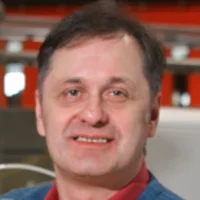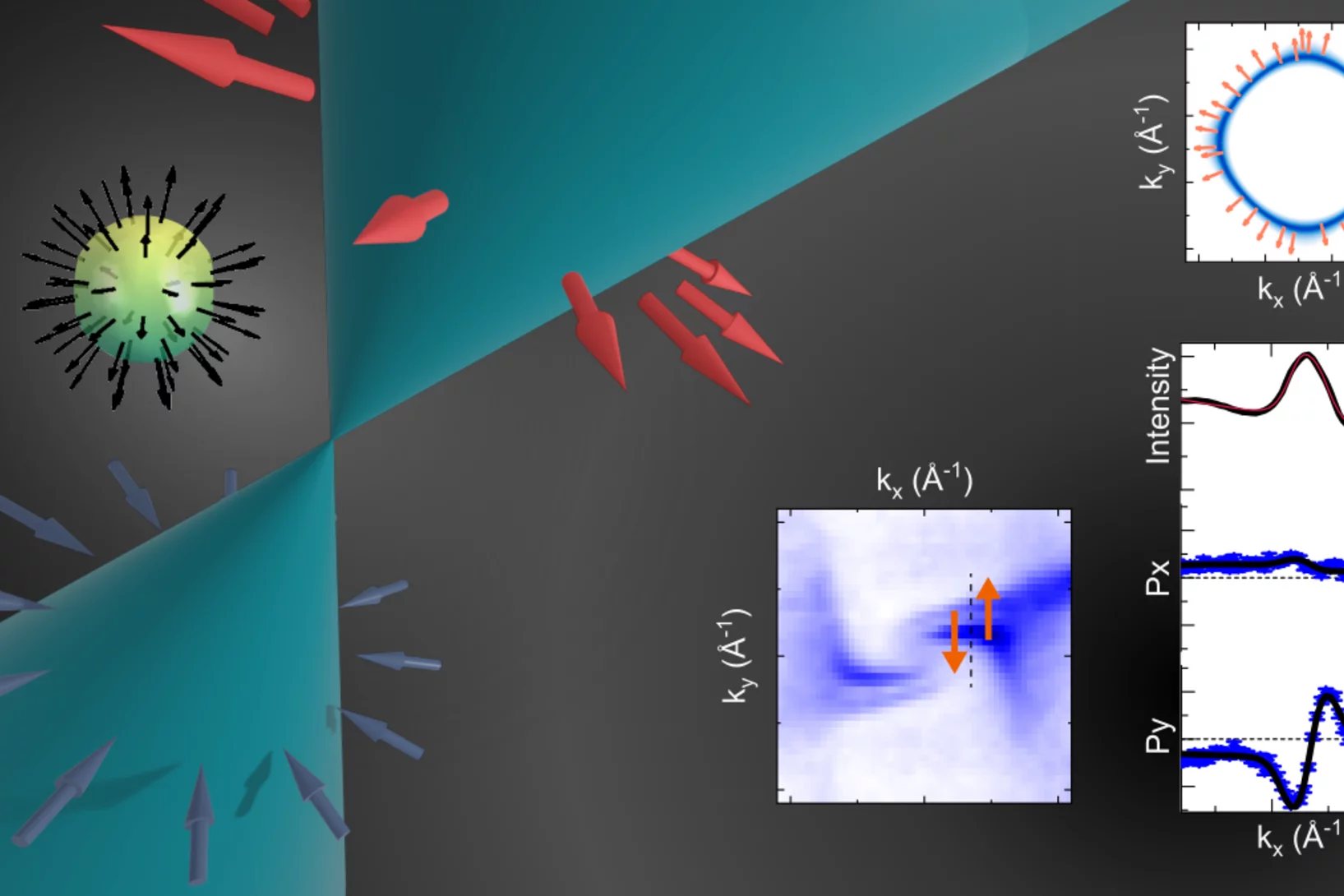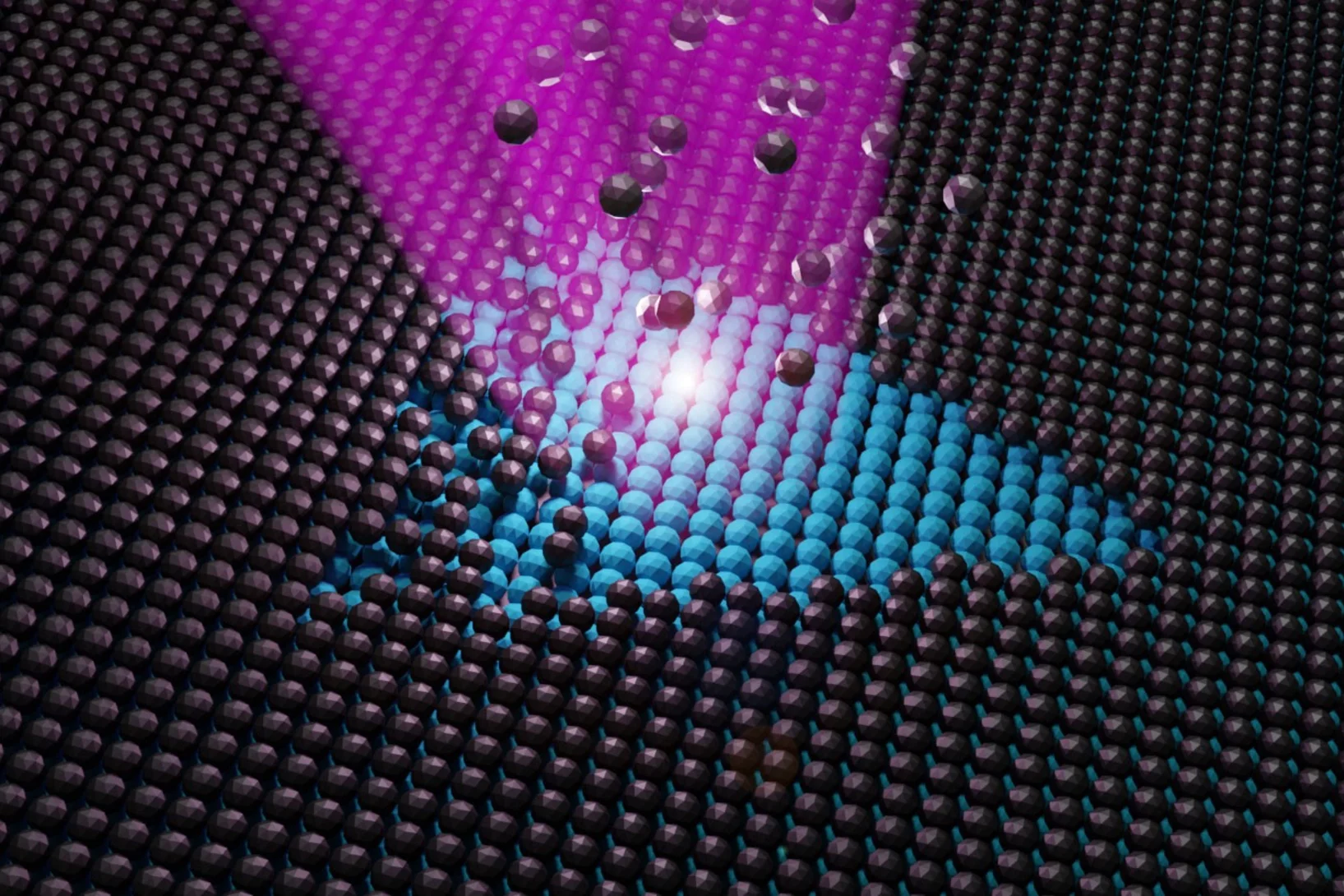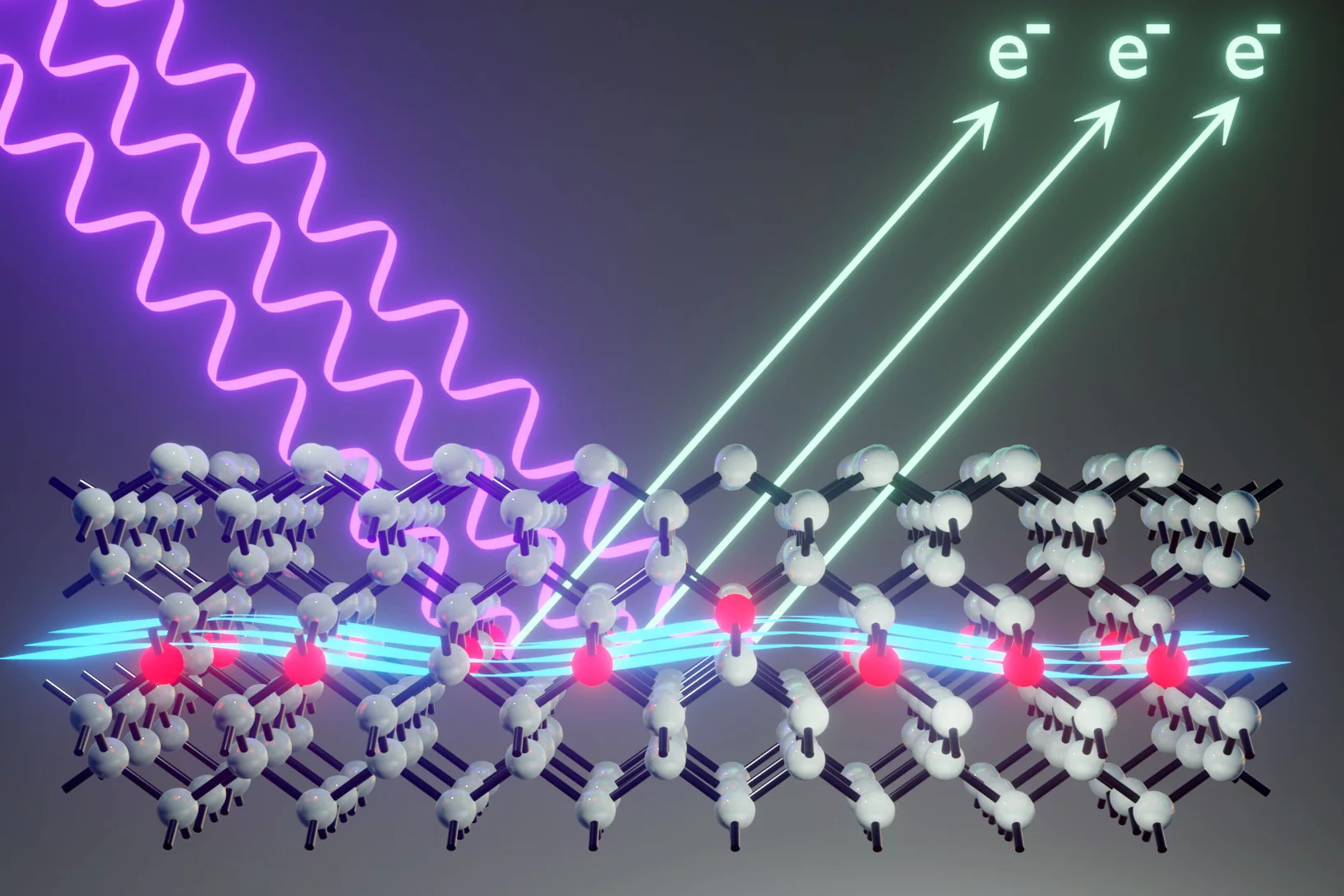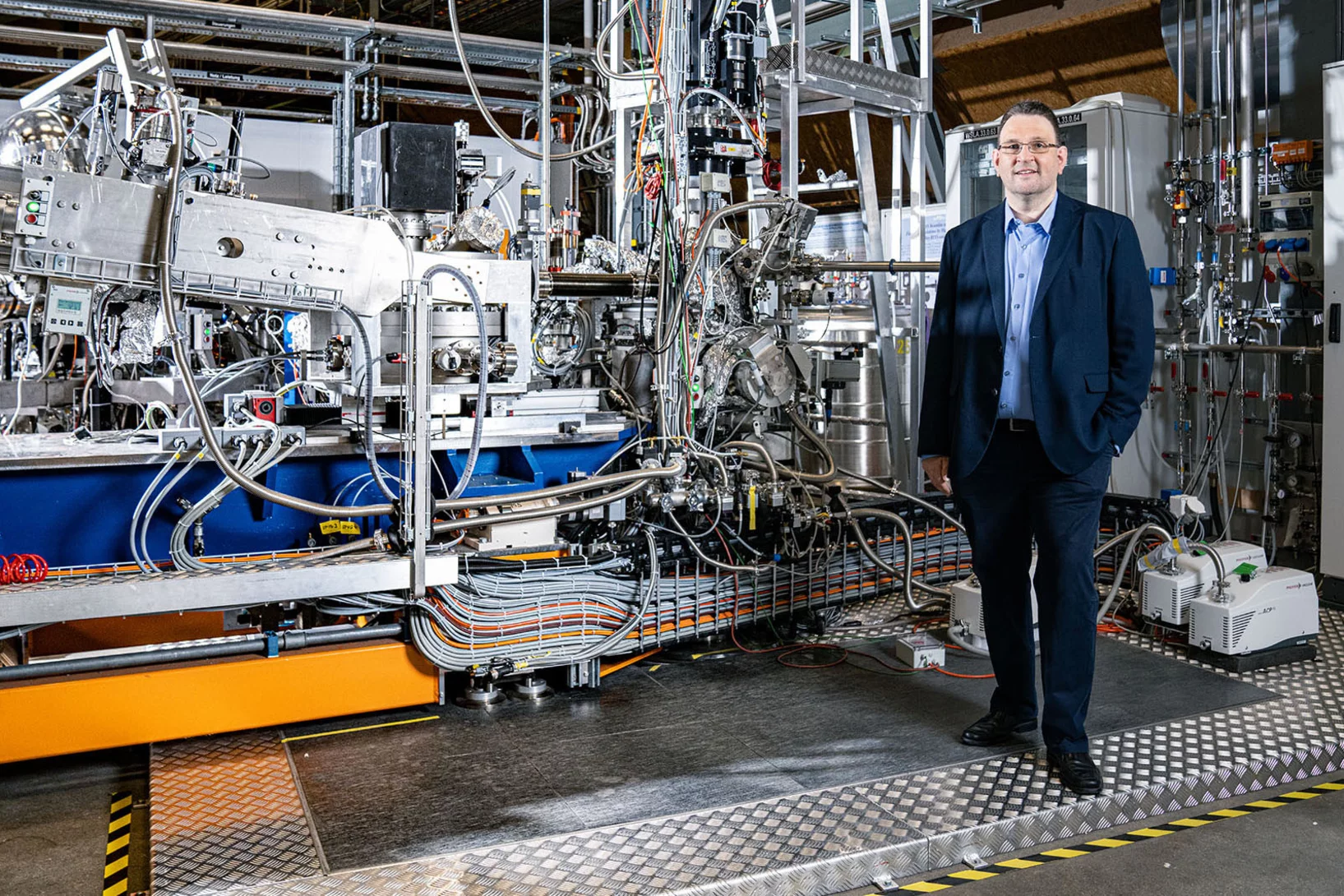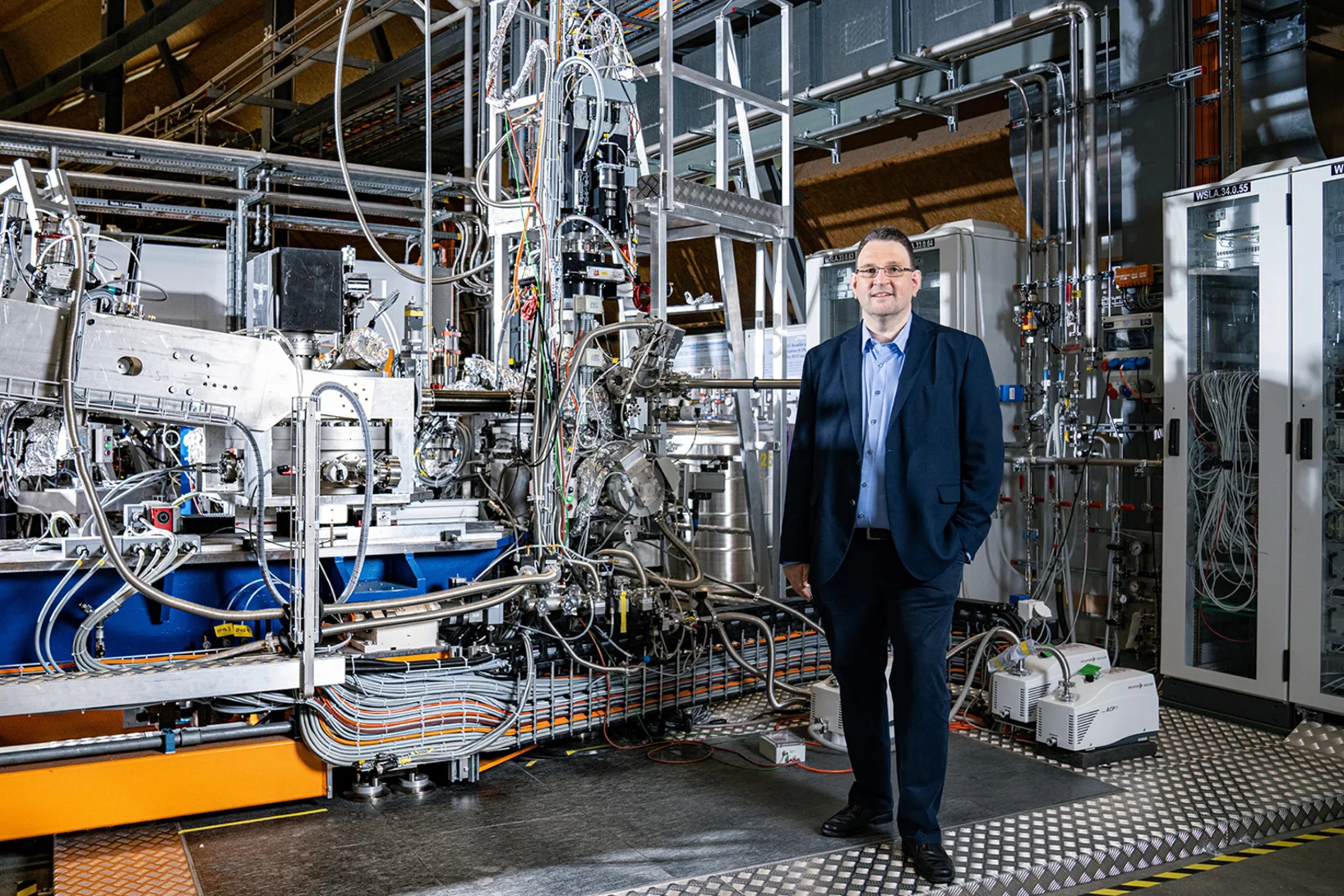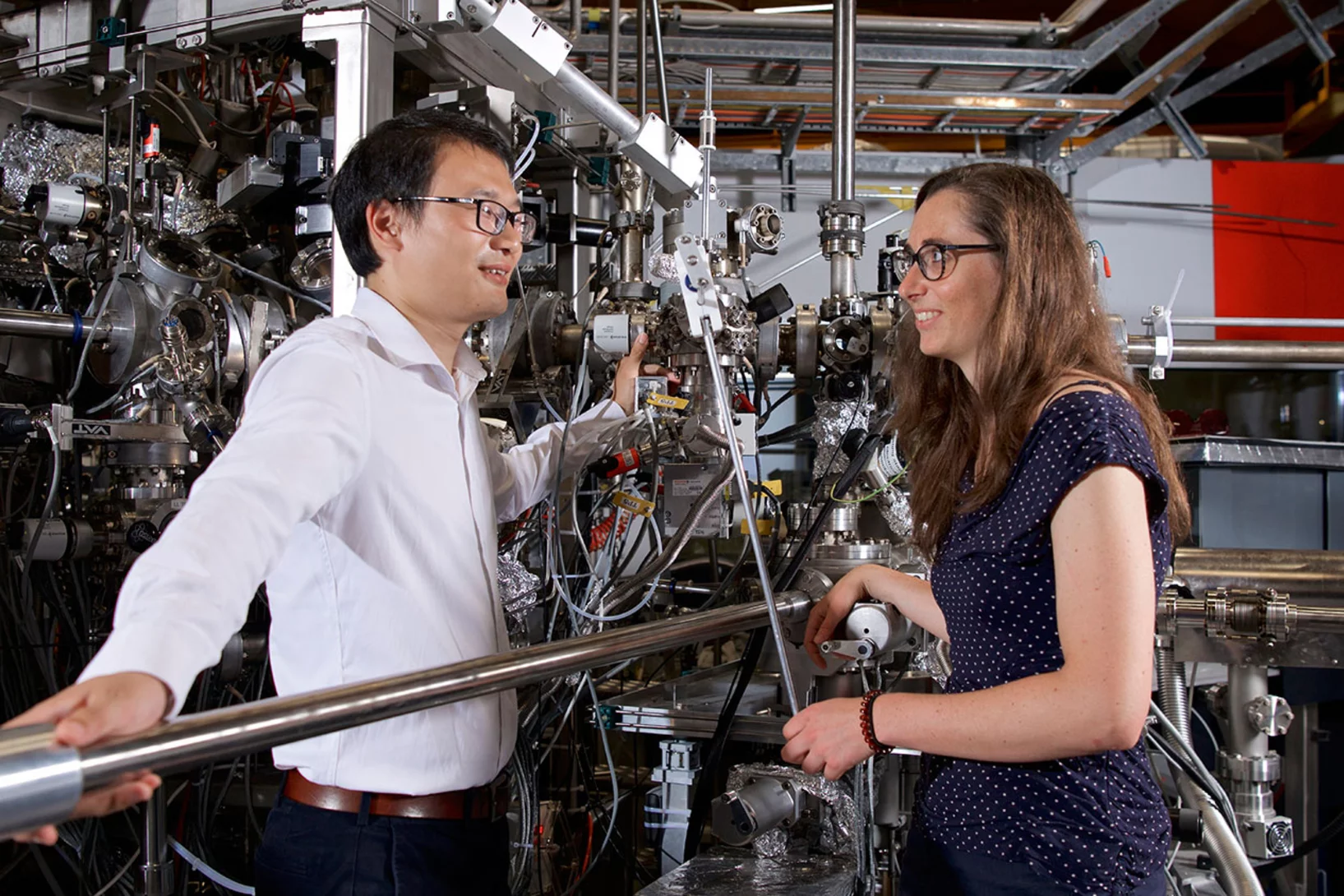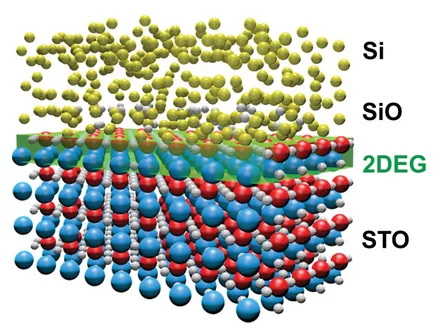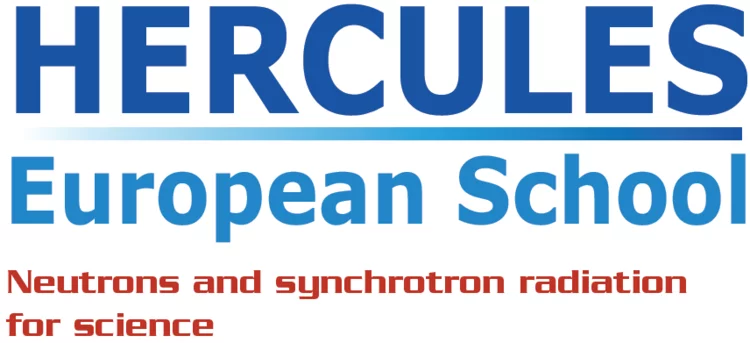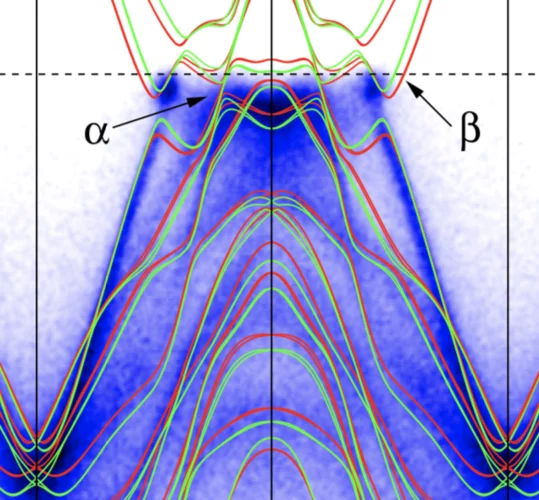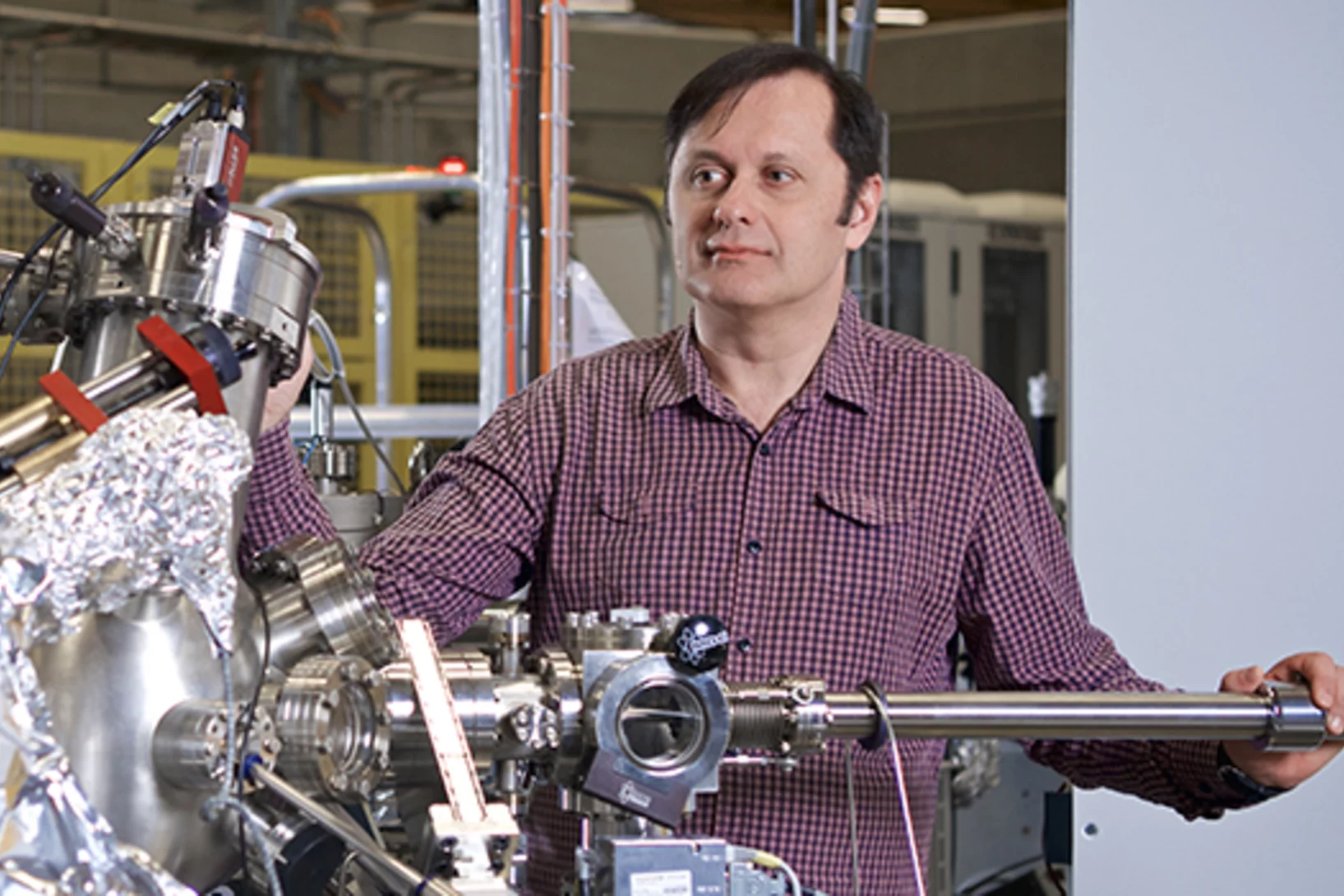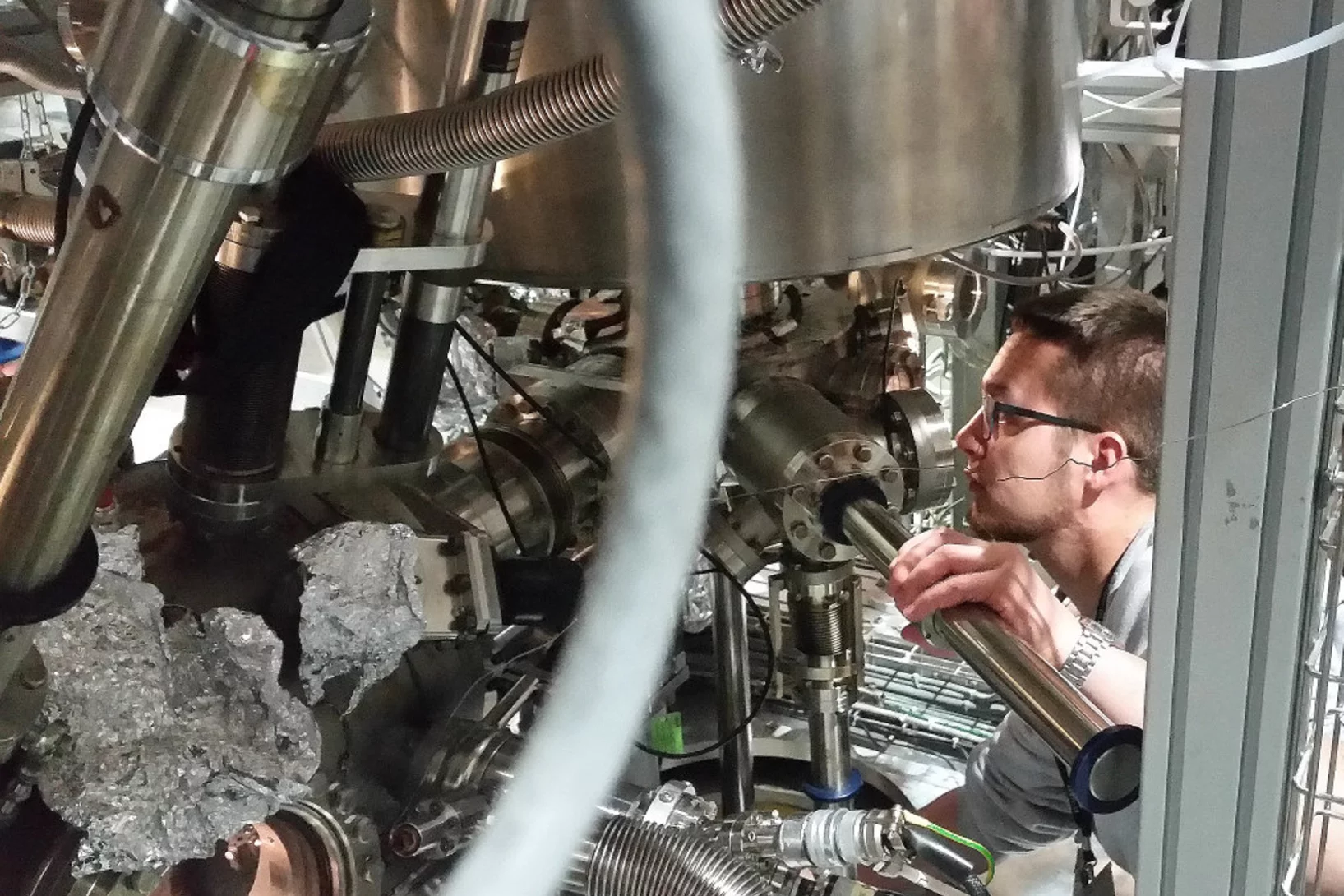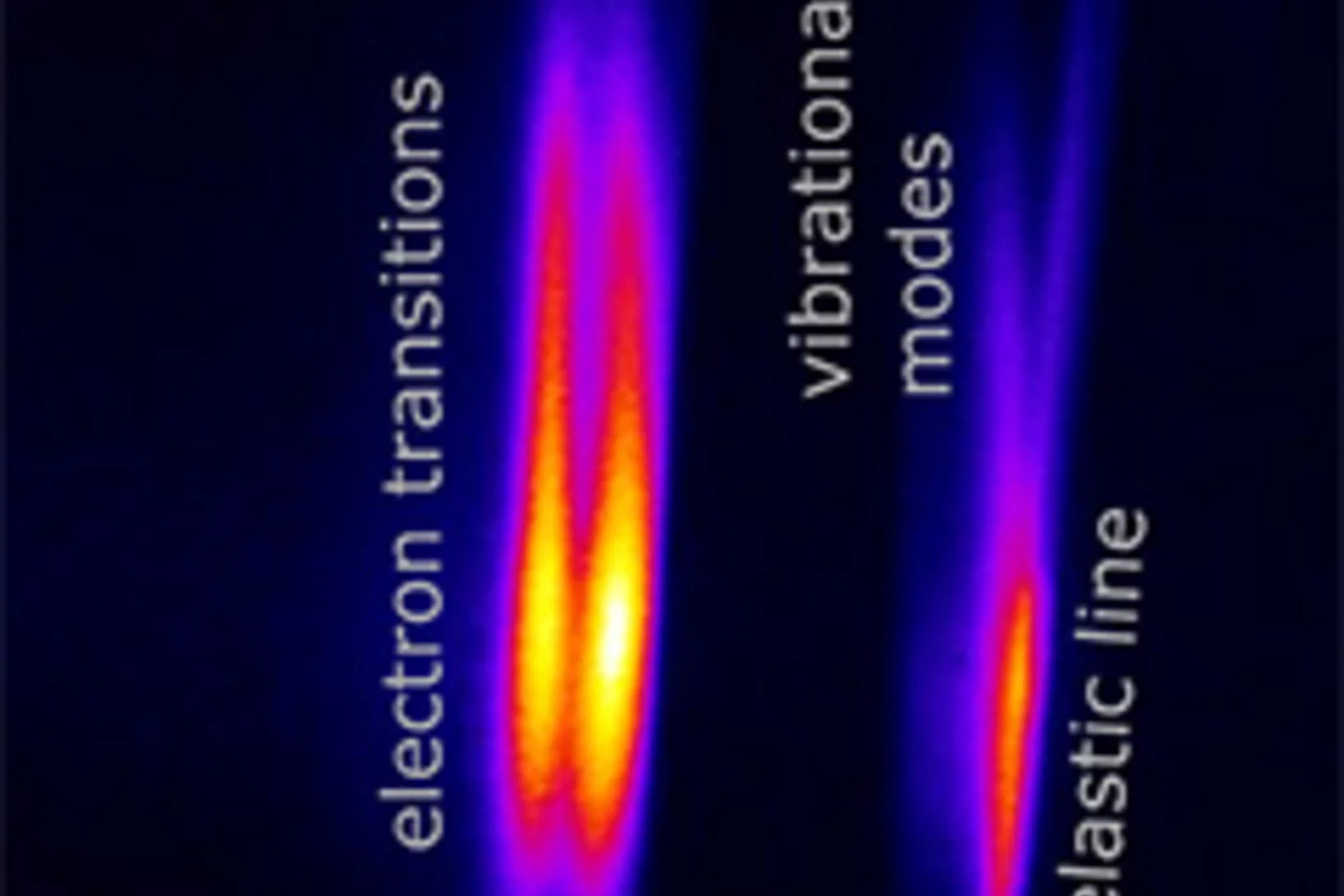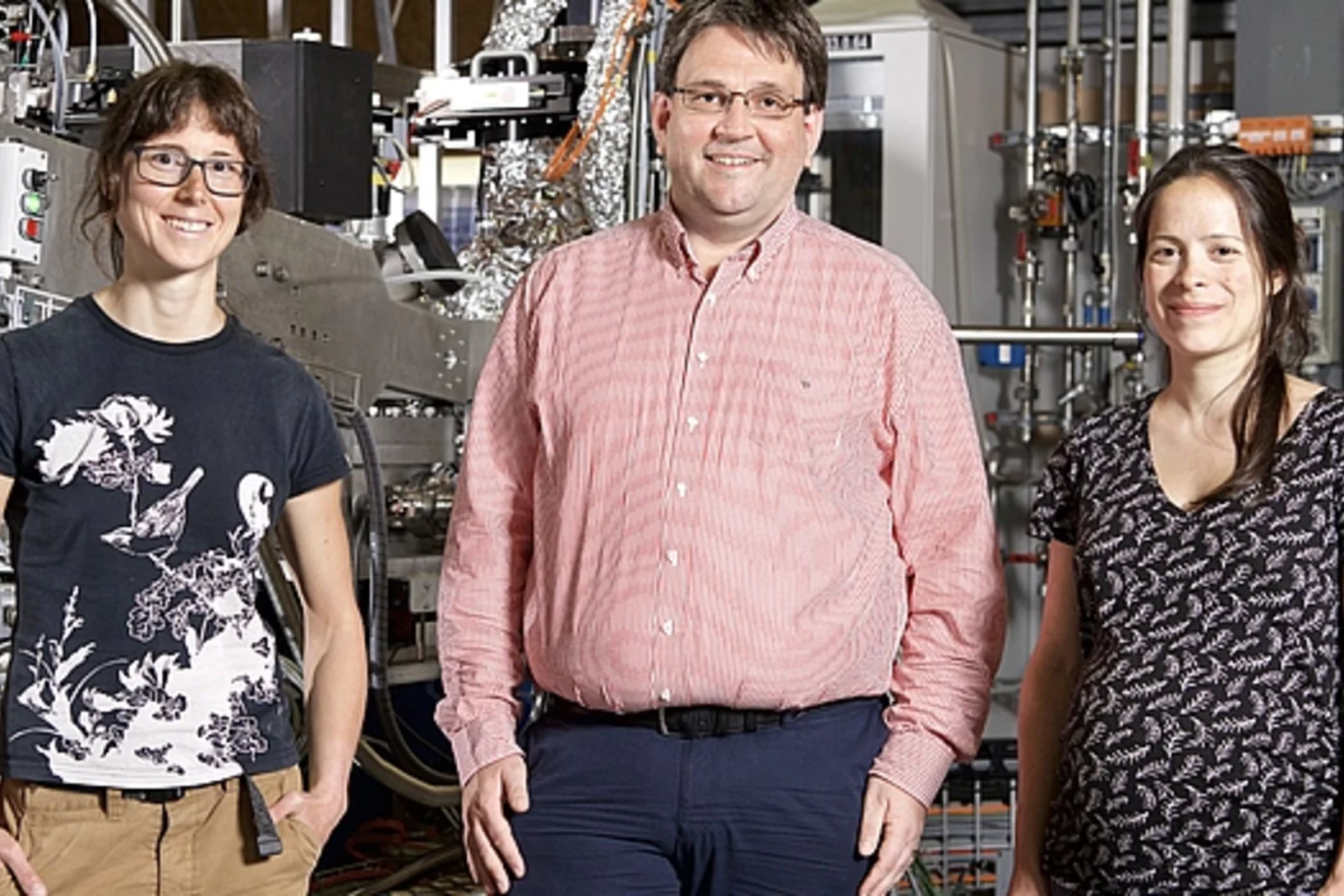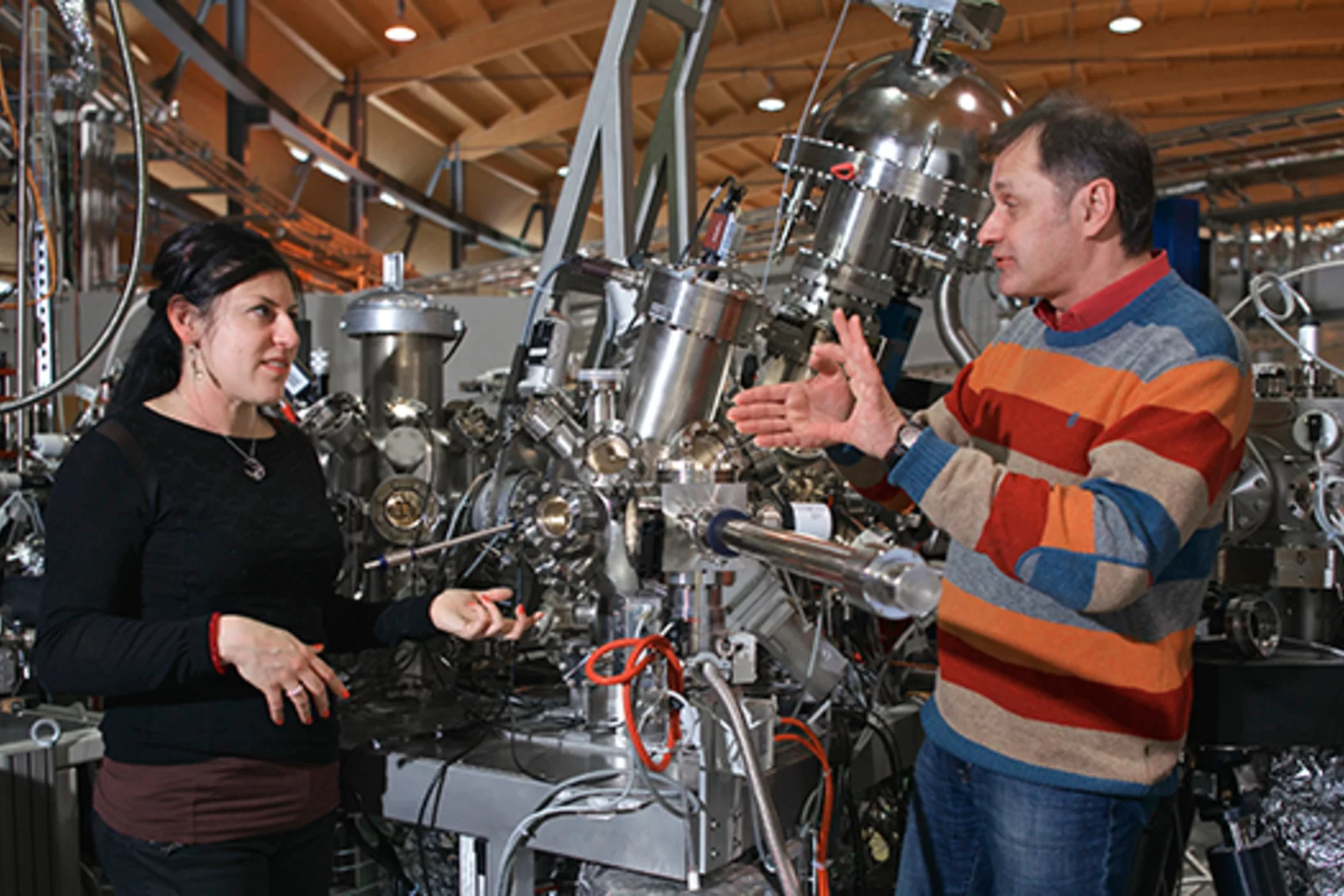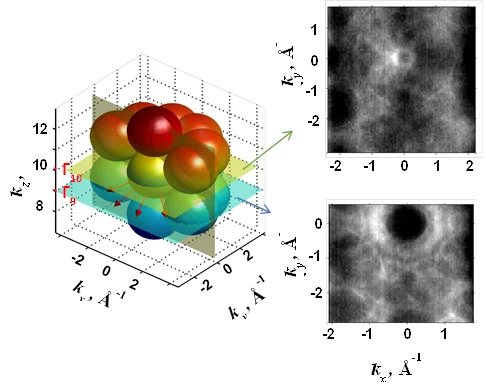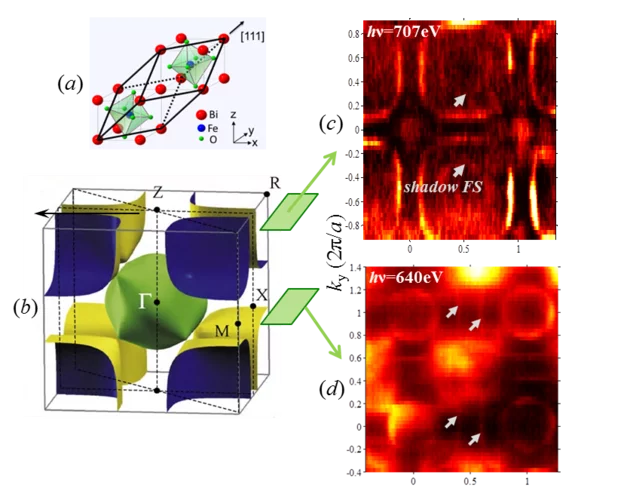Weyl spin-momentum locking in a chiral topological semimetal
Spin–orbit coupling in noncentrosymmetric crystals leads to spin–momentum locking – a directional relationship between an electron’s spin angular momentum and its linear momentum. Isotropic orthogonal Rashba spin–momentum locking has been studied for decades, while its counterpart, isotropic parallel Weyl spin–momentum locking has remained elusive in experiments. Theory predicts ...
Extreme ultraviolet for scalable silicon quantum devices
Experiments at the Swiss Light Source (SLS) show the potential of extreme ultraviolet light (EUV) to make the building blocks of scalable quantum computers.
Unveiling ultra-thin electron liquids in silicon
Soft X-rays enable scientists to visualise non-invasively the electronic properties of ultra-thin dopant layers buried within semiconductor wafers.
A better understanding of water
Potentiometric map of water molecules created
Semiconductors reach the quantum world
Boosted with superconductivity: Semiconductor technology can get a new twist by exploiting quantum effects in superconductors.
Understanding the physics in new metals
Together with international colleagues, PSI researchers have now been able to make correlated metals more readily usable for applications in superconductivity, data processing, and quantum computers.
Customising an electronic material
PSI scientists have investigated a material that could be suitable for future data storage applications. They have manipulated the crystalline structure of their sample while measuring how this affects the material’s magnetic and electronic properties.
Weyl fermions discovered in another class of materials
A particular variety of particles, the so-called Weyl fermions, had previously only been detected in certain non-magnetic materials. But now researchers at PSI have experimentally proved their existence for the first time in a specific paramagnetic material.
New material also reveals new quasiparticles
Researchers at PSI have investigated a novel crystalline material at the Swiss Light Source SLS that exhibits electronic properties never seen before. Among other things, they were able to detect a new type of quasiparticle: so-called Rarita-Schwinger fermions.
X‐Ray Writing of Metallic Conductivity and Oxygen Vacancies at Silicon/SrTiO3 Interfaces
Lithography‐like writing of conducting regions at the interface between SrTiO3 and amorphous Si using X‐ray irradiation opens ways for spatially controlled functionalities in oxide heterostructures.
HERCULES school 2019 at SLS
In the week of April 1-5 PSI welcomes 20 PhD students and postdocs taking part in the European HERCULES 2019 school on Neutron and Synchrotron Radiation. They will attend lectures and perform two days of practical courses at several beam lines of the Swiss Light Source.
Evidence of a Coulomb-Interaction-Induced Lifshitz Transition and Robust Hybrid Weyl Semimetal in Td-MoTe2
Using soft x-ray angle-resolved photoemission spectroscopy we probed the bulk electronic structure of Td-MoTe2. We found that on-site Coulomb interaction leads to a Lifshitz transition, which is essential for a precise description of the electronic structure. A hybrid Weyl semimetal state with a pair of energy bands touching at both type-I and type-II Weyl nodes is indicated by comparing the experimental data with theoretical calculations.
On the path to new high-performance transistors
The electronics industry expects a novel high-performance transistor made of gallium nitride to offer considerable advantages over present-day high-frequency transistors. Yet many fundamental properties of the material remain unknown. Now, for the first time, researchers at the Paul Scherrer Institute PSI have observed electrons while they were flowing in this promising transistor. For that they used one of the world's best sources of soft X-rays at PSI's Swiss Light Source SLS.
HERCULES at the Swiss Light Source
In the week of March 18-23 PSI welcomes 20 PhD students and postdocs taking part in the HERCULES 2018 school on Neutron and Synchrotron Radiation. They will attend lectures and perform two days of practical courses at several beam lines of the Swiss Light Source.
A new RIXS analyzer scheme based on transmission zone plates
PSI scientists have developed a new type of X-ray optics that allows for analyzing the emission in resonant inelastic x-ray scattering (RIXS) experiments. The new approach combines the energy dispersion with imaging capabilities. In a collaborative effort with research groups from Göttingen and Hamburg, two new classes of RIXS experiments, energy mapping and RIXS imaging, have been demonstrated.
Selectively conductive or insulating
The material neodymium nickel oxide is either a metal or an insulator, depending on its temperature. The possibility to control this transition electrically makes the material a potential candidate for transistors in modern electronic devices. By means of a sophisticated development of X-ray scattering, researchers at the Paul Scherrer Institute PSI have now been able to track down the cause of this transition: electrons around the oxygen atoms are rearranging.
Slowed down current could point the way to energy-saving computers
Computers and other electronic devices account for a substantial portion of worldwide energy use. With today’s technologies, it is not possible to reduce this energy consumption significantly any further; chips in the energy-saving electronics of the future will hence have to be made from novel materials. Researchers at the Paul Scherrer Institute PSI have now found important clues in the search for such materials.
Fermi states and anisotropy of Brillouin zone scattering in the decagonal Al–Ni–Co quasicrystal
Quasicrystals (QCs) are intermetallic alloys where excellent long-range order coexists with lack of translational symmetry in one or more dimensions. These materials have a high potential in application as a material for a solar cells, hydrogen storage applications, heat insulating layers, and others.
Concept of a multichannel spin-resolving electron analyzer based on Mott scattering
The spin of electron plays a crucial role in many physical phenomena, ranging from the obvious example of magnetism, via novel materials for spintronics applications, to high-temperature superconductivity. Spin- and angle-resolved photoelectron spectroscopy (SARPES) gives the most direct access to the spin aspects of the electronic structure, but the one-channel detection principle of all presently available SARPES spectrometers severely limits their efficiency. A team of Swiss and Russian scientists has developed a revolutionary concept of a multichannel electron spin detector based on Mott scattering as the spin selective process and imaging-type electron optics.
Fermi Surface of Three-Dimensional La1−xSrxMnO3 Explored by Soft-X-Ray ARPES: Rhombohedral Lattice Distortion and its Effect on Magnetoresistance
A research team led by scientists from the Swiss Light Source has for the first time established three-dimensional (3D) electronic structure of the perovskite compound La1−xSrxMnO3 connected with its colossal magnetoresistance. Instrumental for this study has been the use of the new experimental technique of soft-x-ray ARPES, available at the ADRESS beamline, with its intrinsically sharp definition of 3D electron momentum.

